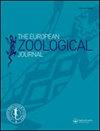种群结构、遗传多样性和人口结构模式揭示了亚平宁山脉北部保护区的大规模地中海褐鳟养殖(意大利)
IF 1.4
4区 生物学
Q2 ZOOLOGY
引用次数: 0
摘要
摘要Salmo trutta物种复合体包括受威胁或集中管理的分类群。国内大西洋品种被广泛养殖,并被大规模引入野外以支持渔业,尽管这种做法通过人为杂交严重威胁到地中海褐鳟的本地种群。描述河流流域野生种群的分布和遗传组成对于确定保护重点和确定适当的管理策略至关重要。在这里,我们用诊断核LDH-C1基因和线粒体D环片段对586条褐鳟进行了基因分型,以评估保护区内33个地点的保护状况,该保护区横跨亚平宁山脉北部亚得里亚海和第勒尼安斜坡的河流流域。结果表明,国内大西洋大范围渗入的情况十分危急。对来自12个自然地点的159个个体的15个微卫星基因座的进一步分析(以及来自孵化场的113篇参考文献)表明,它们与孵化场种群相似,在渐渗/外来种群中具有更高的遗传多样性和瓶颈信号,这与相对较新的将国内大西洋个体引入野生地点的情况一致。相反,亚得里亚海斜坡上唯一一条河流流域的本土遗址显示出基因独特性、多样性降低和人口稳定性。我们还发现了人类介导在单个野生地点引入外来地中海鳟鱼的遗传证据,以及假定的坡间易位。我们进一步了解了人类操纵野生地中海褐鳟种群的发生和后果,为正在进行的旨在保护该濒危分类单元本土种群的保护项目提供了可靠的基线。本文章由计算机程序翻译,如有差异,请以英文原文为准。
Population structure, genetic diversity and demographic patterns unveil massive Mediterranean brown trout manipulations in a protected area of the northern Apennines (Italy)
Abstract The Salmo trutta species complex includes threatened or intensively managed taxa. Domestic-Atlantic strains are widely farmed and massively introduced into the wild to support fisheries, although such practices seriously threaten native populations of Mediterranean brown trout through anthropogenic hybridization. Characterizing the distribution and genetic composition of wild populations across river catchments is crucial to identify conservation priorities and define appropriate management strategies. Here, we genotyped 586 brown trout at the diagnostic nuclear LDH-C1 gene and the mitochondrial D-loop fragment, to assess the conservation status of 33 sites in a protected area spanning river catchments from both the Adriatic and Tyrrhenian slopes in the northern Apennines (Italy). The results indicated a critical situation of widespread domestic-Atlantic introgression. Further analyses at 15 microsatellite loci on 159 individuals from 12 natural sites (along with 113 references from hatcheries) revealed similarity to hatchery stocks, higher genetic diversity and bottleneck signals in introgressed/exotic populations, consistently with relatively recent introductions of domestic-Atlantic individuals into wild sites. Conversely, the only native sites from a single river catchment on the Adriatic slope showed genetic distinctiveness, reduced diversity and demographic stability. We also found genetic evidence of a human-mediated introduction of allochthonous Mediterranean trout in a single wild site, as well as of a putative between-slopes translocation. We provide further insight into the occurrence and consequences of human manipulations on wild Mediterranean brown trout populations, contextually offering a reliable baseline for an ongoing conservation project aiming at preserving native populations of this endangered taxon.
求助全文
通过发布文献求助,成功后即可免费获取论文全文。
去求助
来源期刊

European Zoological Journal
Agricultural and Biological Sciences-Animal Science and Zoology
CiteScore
3.10
自引率
5.60%
发文量
80
审稿时长
30 weeks
期刊介绍:
The European Zoological Journal (previously Italian Journal of Zoology) is an open access journal devoted to the study of all aspects of basic, comparative and applied protozoan and animal biology at molecular, cellular, tissue, organ, organismal, population, and community-ecosystem level. Papers covering multiple levels of organization and integrative approaches to study animal form, function, development, ecology, evolution and systematics are welcome. First established in 1930 under the name of Il Bollettino di Zoologia, the journal now has an international focus, reflected through its global editorial board, and wide author and readership.
 求助内容:
求助内容: 应助结果提醒方式:
应助结果提醒方式:


